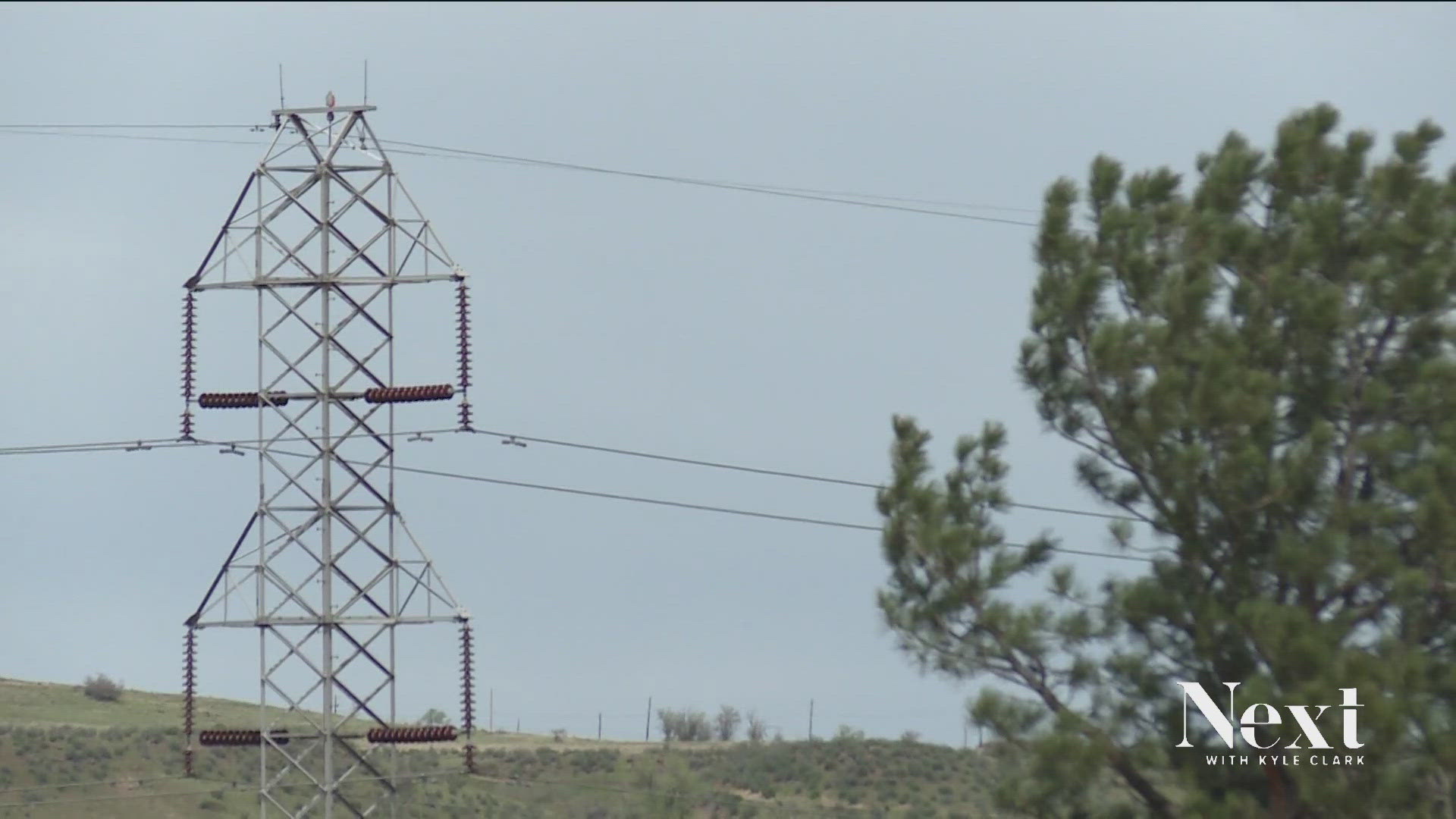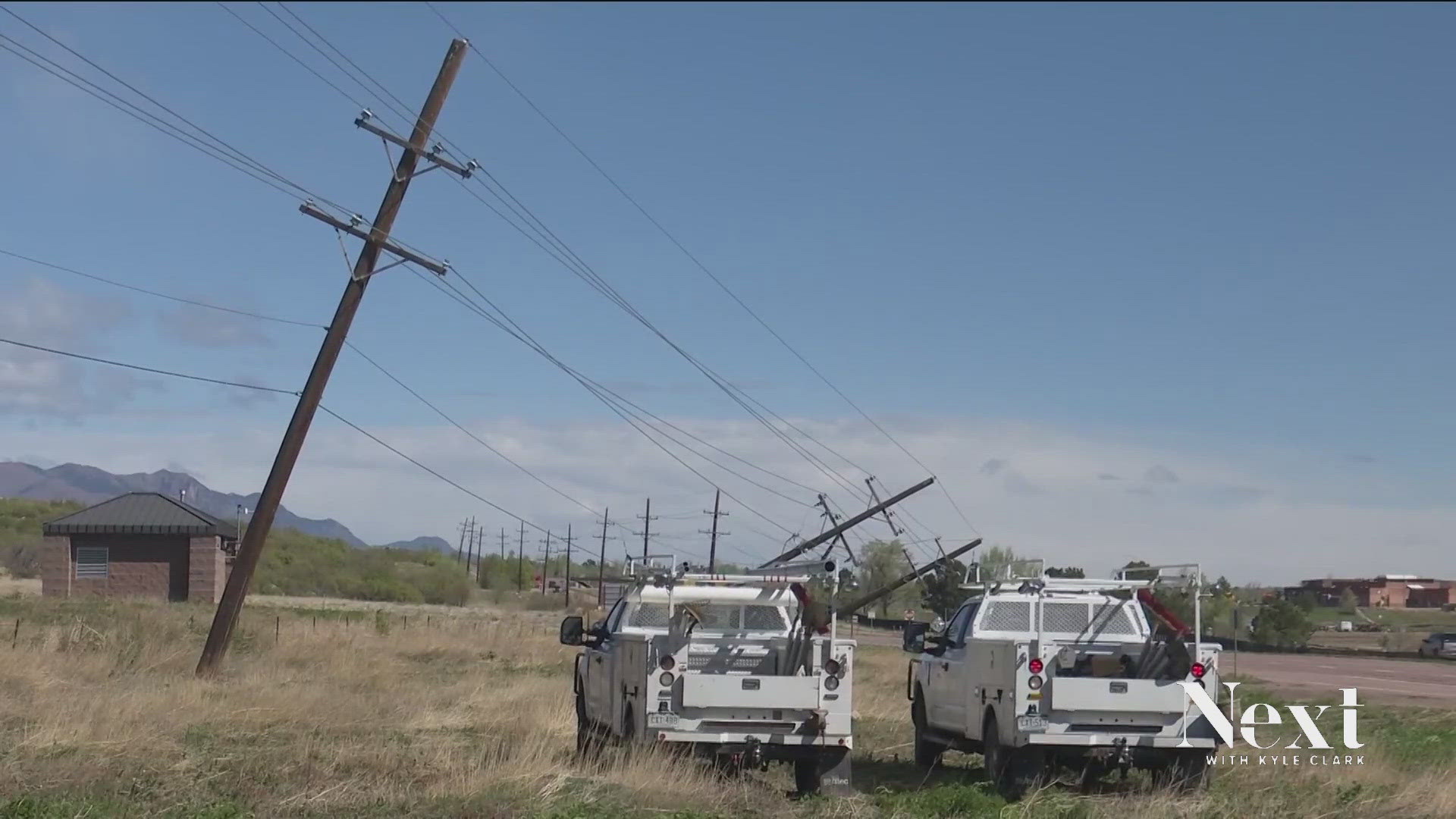DENVER — Despite the wind on Monday, Xcel Energy did not do a public safety power shutoff (PSPS).
That is the last resort method that Xcel took on April 6, when it purposefully shutoff power to more than 50,000 customers in six counties, in part, to avoid its equipment from starting a wildfire in high winds.
On Monday, the Colorado Public Utilities Commission (PUC) held a two-hour hearing to hear from Xcel about its decision and what it will do in the future. It also heard from emergency managers from several counties about what is needed ahead of the next power shutoff.
It was at that meeting that Jefferson County’s emergency manager revealed that the April 6 power shutoff shut off power to the emergency operations center (EOC).
“We were unable to activate our EOC in person because we were part of the planned safety power shutoffs,” Nathan Whittington, Jefferson County Emergency Manager, said. “We were going to lose power to our Emergency Operations Center, so we had to go to a remote activation level, which we did.”
In an interview with Next with Kyle Clark following the meeting, he explained that the emergency operations center will not have a reliable backup power system until next year.
“Currently, there’s limited backup power on this facility,” Whittington said.
His biggest complaint is shared by vocal Xcel customers, the need for communication before Xcel shuts off power again.
“I think the biggest thing we want from Xcel is advanced notification,” Whittington said.
During the PUC meeting, Xcel explained why it made the decision to shutoff power and what it will do next time.
At the end of the meeting, Xcel Colorado President Robert Kenney summed it up.
“Earlier communication. More frequent communication. More accurate communication,” Kenney said.
Based on what was said during the PUC meeting, perhaps Xcel could just duplicate the model it used for Larimer County.
“We did have 18 hours advance notice from Xcel, and we had a single point of contact with Xcel, which was excellent,” Larimer County Emergency Management Director Lori Hodges said.
Xcel executives showed the PUC graphics that were used to explain their decision on April 6.
One part of the presentation showed three graphics related to a model simulation used by Xcel to predict what could happen if a power line started a fire.
“These three examples are three of 35 that we ran, and those simulations helped us determine that PSPS was, indeed, called for,” Michael Lamb, Xcel Energy senior vice president of distribution and gas operations, said. “The data shows that within eight hours, an ignition at any one of these locations could reasonably be expected to burn thousands of acres, destroy between 100 and 700 buildings and impact hundreds of individuals.”
Xcel promised to give more notice ahead of the next PSPS.
Two-to-three days in advance, Xcel plans to notify public safety partners and customers with medical needs.
One-to-two days in advance, all Xcel customers will be notified.
One-to-four hours before the PSPS, customers will be notified again.
At the PUC meeting, Xcel’s president pointed out that the majority of power outages on April 6 were not on purpose.
“It’s important to note that the vast majority of our outages that we saw over these few days were not as of a result, solely, of the proactive shutoffs, but were, in fact, caused by the high winds themselves, with a total of about 275,000 customers experiencing outages,” Kenney said.
Xcel is the only power company in Colorado willing to preemptively shut off power because of wind:
One of the PUC commissioners asked if reverse notification was an option, similar to an AMBER Alert or weather warning.
“You just can’t use the 911 emergency notification system for this, and the reason is because you get to over warning, where people get too many messages that are not emergency-related,” Hodges said. “It has to be immediate life safety, and I know there could be an argument that this could be that. I’m just telling you that the law says that they can’t use it for that specific purpose.”
Whittington said he would rather have advance notice and perhaps have the county use its opt-in notification tools to alert residents.
“If we knew we had two days before we had a possibility of this, we could get the message out without having to utilize a system that is really designed for those critical incident notifications,” Whittington said.
Xcel also used graphics to show the PUC that neighborhoods with underground power lines were impacted by the power shutoff because they are serviced by above ground power lines. Kenney said one solution would be to bury power lines in high-risk areas.
Xcel also said it planned to reach out to all residential customers this month to have them opt-in to a medical certification program, so the company would know which customers are most vulnerable to a shutoff.
“In terms of our most vulnerable customers, we absolutely plan to develop some sort of battery program,” Kenney said.
But who would pay for that? Kenney was not quite sure.
“I, kind of, alluded to this earlier, whether it’s something that we would initiate or look at opportunities to partner with organizations that are already doing that good work,” Kenney said.
SUGGESTED VIDEOS: Next with Kyle Clark


